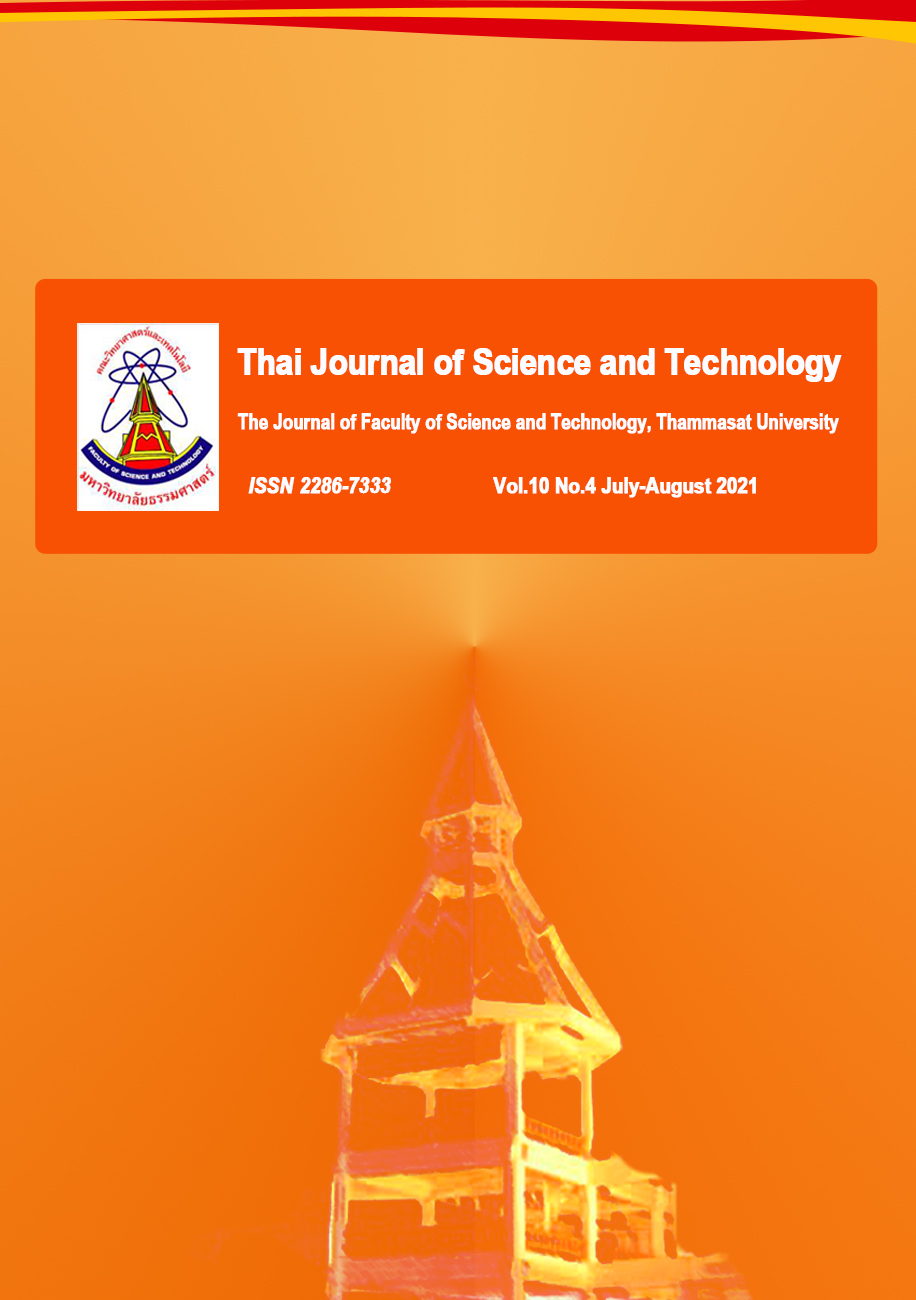Optimal Crop Pattern for the Maximum Net Income Using Linear Optimization in Mae Chaem District, Chiang Mai Province
Main Article Content
Abstract
Whilst the world population is increasing, consequently, the demand for food and agricultural products also raised. Farmers turn to monoculture for high the productivity of agricultural products with limited arable land and capital for gaining better income; however, farmers still have low incomes. Therefore, evaluating the potential of agricultural spatial is one of the significant factors influencing agricultural productivity also the income of farmers such as crop pattern, agricultural practice, and material used for the cultivation with the most efficient use of limited resources. This research is to propose an appropriate crop pattern based on plant spacing for allocating plantation areas through Linear Optimization technique in agroforestry, which five plant groups are composed of soil-improving crops, fruit crops, vegetables and herbs, cash crops and forests, for the optimization of farm productivity in 1 rai (1 rai = 0.16 hectares) of the arable area by determining the net income. The results have shown that the optimal agricultural pattern (Pattern 1) for planting the soil-improving crops, fruit crops and cash crops throughout the area, while forest, vegetables and herbs are around area. This pattern provides the numbers of crop tress for each type with maximum farmer's income.
Article Details

This work is licensed under a Creative Commons Attribution-NonCommercial-NoDerivatives 4.0 International License.
บทความที่ได้รับการตีพิมพ์เป็นลิขสิทธิ์ของคณะวิทยาศาสตร์และเทคโนโลยี มหาวิทยาลัยธรรมศาสตร์ ข้อความที่ปรากฏในแต่ละเรื่องของวารสารเล่มนี้เป็นเพียงความเห็นส่วนตัวของผู้เขียน ไม่มีความเกี่ยวข้องกับคณะวิทยาศาสตร์และเทคโนโลยี หรือคณาจารย์ท่านอื่นในมหาวิทยาลัยธรรมศาสตร์ ผู้เขียนต้องยืนยันว่าความรับผิดชอบต่อทุกข้อความที่นำเสนอไว้ในบทความของตน หากมีข้อผิดพลาดหรือความไม่ถูกต้องใด ๆ
References
Akpan, N.P., & Iwok, I.A. (2016). Application of Linear Programming for Optimal Use of Raw Materials in Bakery. International Journal of Mathematics and Statistics Invention, 4(8), 51–57.
Attavanich, W. (2013). The effect of Climate Change on Thailand’s Agriculture. In 7th International Academic Conference, 84005, 23–40. (in Thai)
Attavanich, W., et al. (2018). Microscopic view of Thailand’s agriculture through the lens of farmer registration and census data. Forthcoming PIER Discussion Paper. (in Thai)
Bazaraa, M.S., Jarvis, J.J., & Sherali, H.D. (2010). Linear Programming and Network Flows. John Wiley & Sons, Inc.
Buzuzi, G., & Buzuzi, A.N. (2018). A Mathematical Programming Technique to Crop Mix Problem on a Farm in Mutasa, Manicaland Province, Zimbabwe. International Journal of Economics and Management Studies, 5(11), 6–10. https://doi.org/10.14445/23939125/ijems-v5i11p102
Department of Forestry. (2013). Patterns of Forest Trees Planting in Agroforestry Systems. (in Thai)
Hamsa, K.R., Bellundagi, V., & P.S.S. M. (2018). Economic optimum crop planning for maximization of farm net income in central dry zone of Karnataka: An application of linear programming model. In 30TH International Conference of Agriculture Economists.
IPCC. (2015). Climate Change 2014 Mitigation of Climate Change. In Intergovernmental Panel on Climate Change 2015.
Jirath, C., et al. (2019). Agricultural dynamics and implications for returns and risks of agricultural households in Thailand, Forthcoming PIER Discussion Paper. (in Thai)
Ministry of Labour. (2020). Minimum wage rate. Retrieved from: https://www.mol.go.th/อัตรา ค่าจ้างขั้นต่ำ/, April 18, 2020 (in Thai) Open Development Thailand. (2019).
Panyagaew, W., Chatchawan, C., Saowaree, C., Puttipong, N., & Surapot, M. (2016). Maize in Mae Chaem. Center for Research and Academic Outreach Faculty of Social Sciences Chiang Mai University.
Sallan, J.M., Lordan, O., & Fernandez, V. (2015). Modeling and Solving Linear Programming with R. Retrieved from: https://doi.org/10.3926/oss.20
Supasri, T., Panich, I., & Sate, S. (2016). Life Cycle GHGs and PM10 Evaluation of Maize Cultivation in Mae Chaem District, Chiang Mai. Engineering Journal Chiang Mai University, 23(3), 94–105.
Thilagavathi, N., & Amudha, T. (2019). A novel methodology for optimal land allocation for agricultural crops using Social Spider Algorithm. PeerJ. 2019, Sep 17, 7, e7559. doi: 10.7717/peerj.7559
Titaphorn, S., Panich, I., & Sate, S. (2016). Life Cycle GHGs and PM10 Evaluations of Maize Cultivation in Chiang Dao.
Upadhyaya, A. (2017). Application of optimization techniques for crop planning to improve farm productivity of ICAR-RCER, Patna, India. Journal of Animal Science, 4, 68-70. https://doi.org/10.21921/jas.v4i1.7423
Wankhade, M.O., & Lunge, H.S. (2012). Allocation of Agricultural Land To The Major Crops of Saline Track By Linear Programming Approach: A Case Study. International Journal of Scientific & Technology Research, 1, 21-25.


